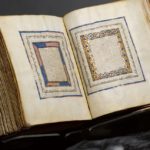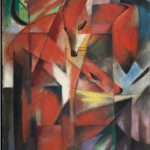Painting in nature, rather than in the studio

HOUSTON, TX.- Inspired by the possibilities of painting in nature, rather than in the studio, artists traveled to the rugged Forest of Fontainebleau near Paris from the early 1820s to the mid-1870s forging innovations in art that would resonate for generations to follow. There, among the rural villages and the vast and varied wilderness, they laid the groundwork for Impressionism, influenced the development of landscape photography, and raised early advocacy for nature conservancy. In the Forest of Fontainebleau: Painters and Photographers from Corot to Monet at the Museum of Fine Arts, Houston. The exhibition of 96 works will be on view through October 19.
Organized by the National Gallery of Art in association with the MFAH, the show is the first U.S. exhibition to trace the dual evolution of landscape painting and photography at Fontainebleau. It features multiple works by Jean-Baptiste-Camille Corot and Claude Monet, the artists who represent the ends of the experimental spectrum at Fontainebleau, and also highlights works by Jean-François Millet and Théodore Rousseau, who were among the most diligent students of the forest and eventually made it their permanent home. Other featured artists include Frédéric Bazille, Narcisse Diaz de la Peña, Auguste Renoir, and Alfred Sisley. Among the nine photographers represented are such pioneers of the field as Gustave Le Gray, Eugène Cuvelier, and Charles Famin.
“In the Forest of Fontainebleau celebrates a crucial, fertile period in art history,” said Aurisch. “Although the Impressionists are often credited with the innovation of painting outdoors directly in front of the motif, this exhibition wants to set the record straight by documenting the achievements of the earlier group of painters, who passed on their hard-earned experience to the young painters of Monet´s generation.”
The Forest
The Forest of Fontainebleau is located about 35 miles southeast of Paris. At about 50,000 acres, it is not only France´s largest forest, but its most topographically diverse with dramatic stands of  centuries-old oak trees, rocky plateaus and gorges, and desolate, arid spaces. Corot was among the first artists to begin making regular visits to the forest in the early 1820s. Others soon joined him in experimenting with open-air painting and the challenge of capturing light, shadow, weather, and seasons in this “natural studio.” Those years quietly marked the beginning of a revolution in landscape painting in France that would spread throughout Europe and the United States.
centuries-old oak trees, rocky plateaus and gorges, and desolate, arid spaces. Corot was among the first artists to begin making regular visits to the forest in the early 1820s. Others soon joined him in experimenting with open-air painting and the challenge of capturing light, shadow, weather, and seasons in this “natural studio.” Those years quietly marked the beginning of a revolution in landscape painting in France that would spread throughout Europe and the United States.
By the 1830s, an informal artists´ colony was established in Barbizon, one of several villages situated along the perimeter of the forest, favored because it had the best accommodations. The artists who stayed at the inns there and embraced plein-air painting gave rise to the art movement known as the Barbizon School. Among the other villages first frequented by artists were Chailly and Marlotte. All offered easy access into the forest, but most artists didn´t venture too far into the wilderness because of the supplies they had to transport on their backs: typically, an umbrella, a folding easel, stool, paint boxes, and a canvas.
Photographers began making pilgrimages to Fontainebleau in the 1840s when the introduction of the paper negative process made it possible to travel without heavy equipment. They were working side-by-side with painters as early as 1849, contributing to the camaraderie and exchange of ideas. During this period, France surpassed Italy as the pre-eminent center for plein-air painting because of the activity at Fontainebleau, and landscape photography became an art.
The forest´s attraction for artists began to decline in the 1870s, but the artists working there then were already carrying out the experiments in painting outdoors that would lead to another revolution in art: Impressionism.
The Exhibition
The exhibition will be installed in sections, each devoted to an aspect of the forest and its role in the development of naturalistic landscape painting and landscape photography: Discovery of the Forest; Trees and Rocks; Nature and Observation; Fontainebleau on a Grand Scale; and Village Life. More than 56 private and institutional lenders contributed works to the show, including the MFAH. The museum´s Great Oaks of the Vieux Bas-Bréau (1864) by Rousseau, Gustave Courbet´s Gust of Wind (1865), and two photographs by Le Gray, Tree, Forest of Fontainebleau (c. 1856) and Le Pavé de Chailly (1852) are among the highlights.
 •Discovery of the Forest
•Discovery of the Forest
Corot had been to the forest before his 1825 trip to Italy where he practiced painting outdoors. He returned to France with a new appreciation for the wonders of the forest and continued to work there for five decades. The exhibition includes seven paintings by Corot ranging from 1822´s Study of a Tree Trunk in the Forest of Fontainebleau to 1872´s Woodcutters in a Forest Valley. Le Gray was among the first photographers to visit the forest, creating salted paper prints from paper negatives in the fall of 1849. The exhibition also includes seven works by Le Gray that demonstrate his painterly achievement in capturing the light, textures, and atmosphere of the forest.
•Nature and Observation
Artists who made regular trips to forest, and those who lived there, like Rousseau, were obsessed with capturing its many moods exposed in different seasons, in different weather, at different times of the day. Examples include Rousseau´s red-toned Sunset over the Sands of Jean de Paris (1864), De la Peña´s foreboding The Storm (1871), and Cuvelier´s Pathway in the Forest of Fontainebleau in the Snow (early 1860s).
•Fontainebleau on a Grand Scale
Because artists had to carry their supplies into the forest, they often worked on portable-size canvases. However, the forest also served as an inspiration for large-scale works completed in the studio after studies done outdoors. Courbet´s monumental Gust of Wind is one example. At more than seven-feet-wide, the painting is a fantasy scene combining elements from several sketches the artist made in the forest.
Visit : the Museum of Fine Arts, Houston at : www.mfah.org
Source: artknowledge news







